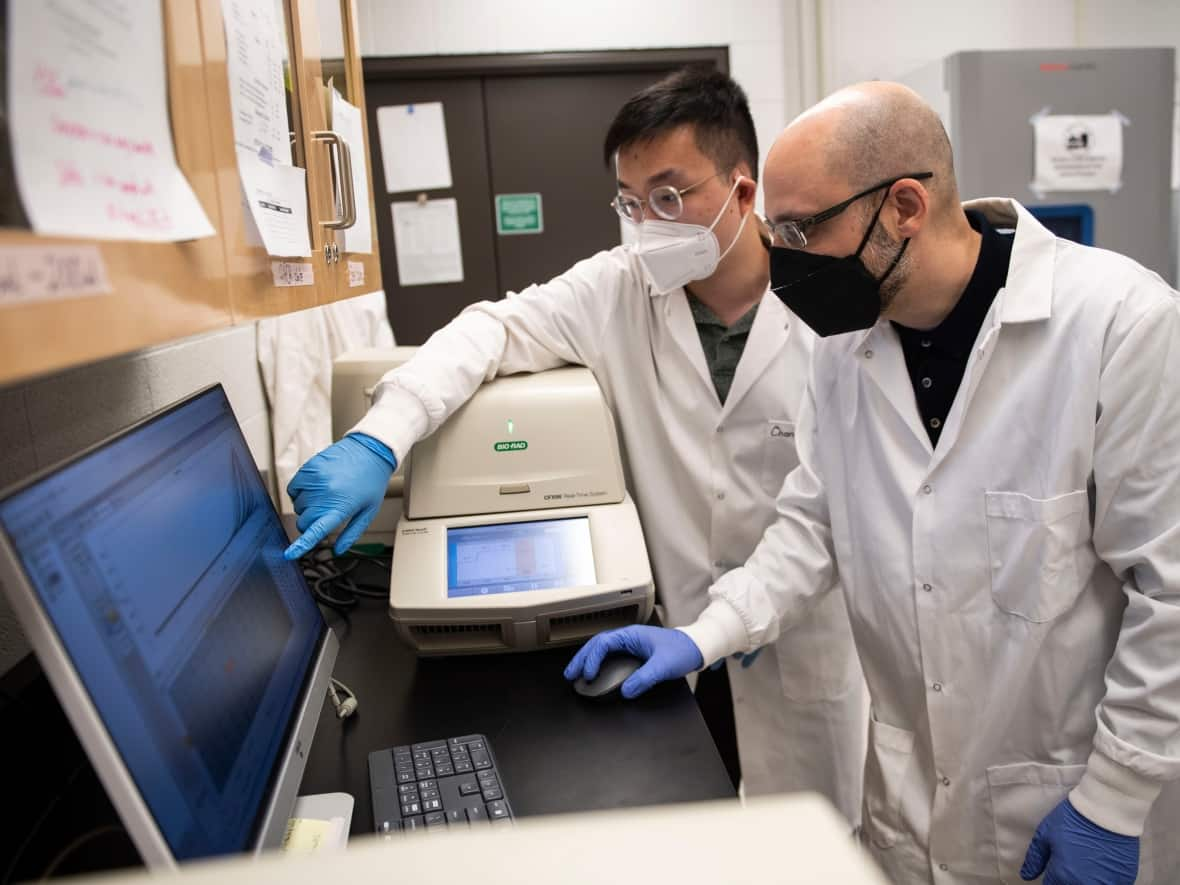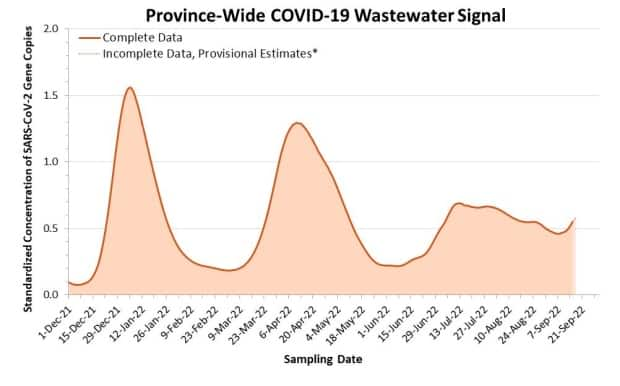Ontario reports 72 new COVID-19 deaths as wastewater signals climb once again

Ontario is reporting 72 new deaths linked to COVID-19, as wastewater signals are once again on the rise after trending downward for months, according to the latest report from Public Health Ontario.
New data released Thursday from the Ontario Ministry of Health shows the number of people in hospital with the virus climbed from 1,141 this time last week to 1,265 this week.
The number of people in intensive care with COVID-19 also rose slightly from 129 to 133. Of those, 57 patients require a ventilator to breathe, about the same as last week's total of 58.
Test positivity on Thursday dropped slightly to 12.5 per cent, down from 13.1 per cent last Thursday.
Meanwhile, the latest report from Public Health Ontario, which is updated every Friday, shows the level of the novel coronavirus seen in Ontario's wastewater began creeping upward around the first week of September and is estimated to have been climbing since.
That's after a period of plateau and slow decline following a peak in early July.

Wastewater signals have increased in most parts of the province, including in the Greater Toronto Area, with the Central East and West regions seeing the steepest climbs. Central East includes Haliburton Kawartha and Pine Ridge; Peterborough; and Simcoe Muskoka, while Central West includes Brant County; Haldimand-Norfolk; Hamilton and Niagara Region.
The news comes as Ontario opened Omicron-targeted COVID-19 vaccine bookings to all adults Monday.
Last week, Chief Medical Officer of Health Dr. Kieran Moore noted vaccine uptake among Ontario's youngest age group was lower than expected.
COVID-19 patients in Ontario hospitals and ICUs
"We have work to do to continue our (official) message," he told The Canadian Press at the time. "It will accelerate as we head into indoors and head into the fall as we perceive the risk of transmission will increase."
The most recent wave of the illness to hit Ontario — which started on June 19 and peaked in early August — is being fuelled largely by Omicron variant BA. 5.
This week, the province is seeing approximately just over 13,000 new cases daily based on limited testing.
Experts have said reported case counts are a severe underestimate of the actual extent of COVID-19 infections in Ontario.
Earlier this month, members of Ontario's since-dissolved science advisory table said they would have advised against the province's decision to scrap COVID-19 isolation requirements had they been consulted on the move.
On Aug. 31, the province scrapped the mandatory five-day isolation period for those who test positive for COVID-19.


